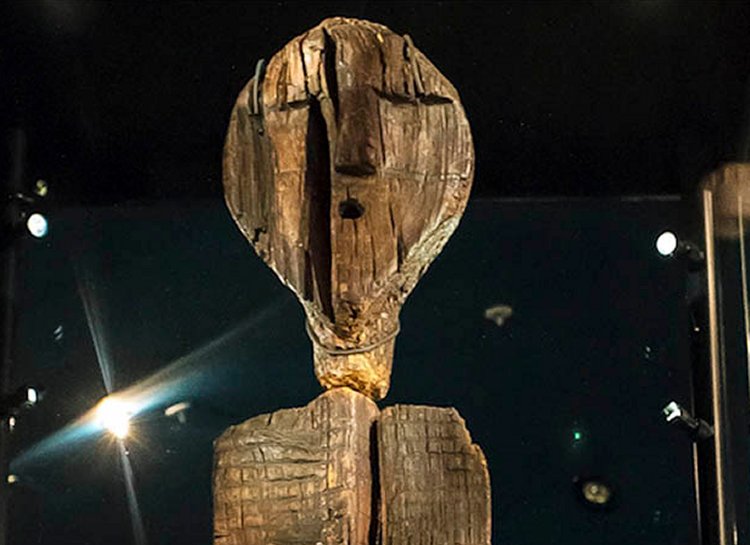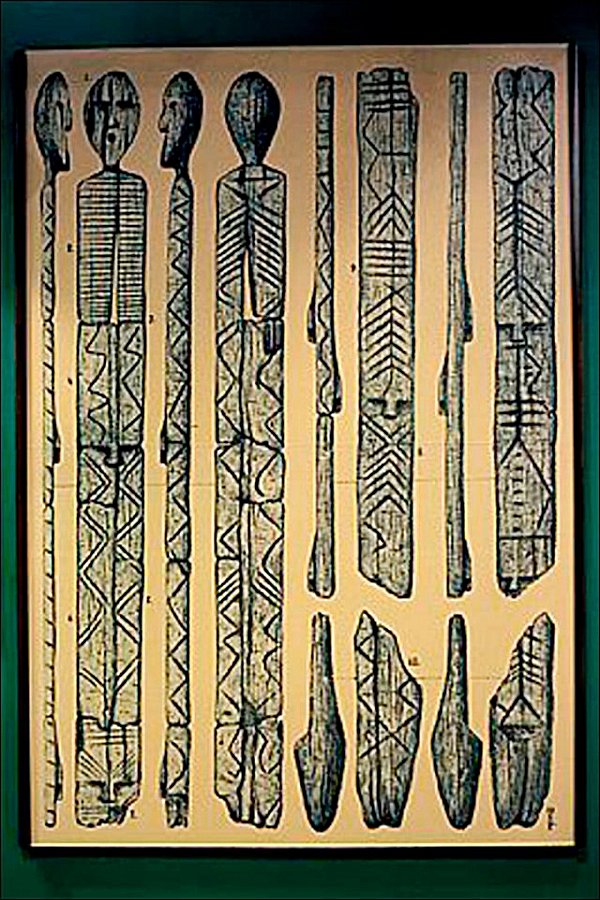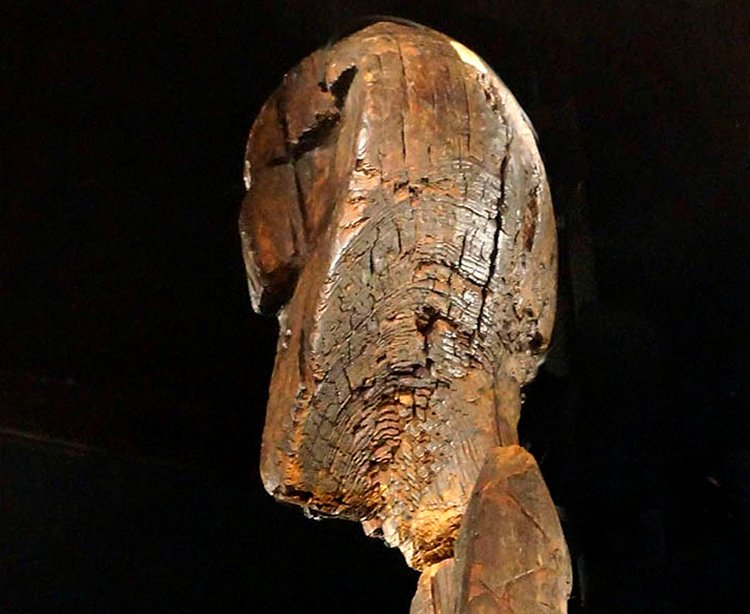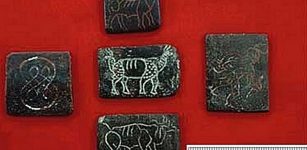Siberian Shigir Idol With Seven Faces Is The World’s Oldest Wooden Sculpture
A. Sutherland - AncientPages.com - A wooden statue pulled from a peat bog in Russia more than a hundred years ago is now believed to be twice as old as Stonehenge.
The Shigir Idol, which found in the Ural Mountains in 1890, is thought to be 11,000 years old - making it the oldest wooden sculpture in the world.
Depicting a man with mysterious symbols inscribed on him - which scientists believe could be an ancient encrypted code - the statue is 1,500 years older than previously thought.

The Idol - found in a peat bog in the Urals - is also 1,500 years older than previously thought by scientists
Scientists in Mannheim, Germany, used the most up-to-date carbon dating technology, called Accelerated Mass Spectrometry, to determine the statue’s age.
“The results exceeded our expectations," Thomas Terberger, a professor at the Department of Cultural Heritage of Lower Saxony, part of the team who dated the Idol, told the Siberian Times.

Previously was understood that the Idol had seven faces, only one is three dimensional. Picture: The Siberian Times
“This is an extremely important date for the international scientific community. It is important for understanding the development of civilisation and the art of Eurasia and humanity as a whole.
“We can say that in those times, 11,000 years ago, the hunters, fishermen and gatherers of the Urals were no less developed than the farmers of the Middle East.”

Researchers show that the Idol - covered in an 'encrypted code' which academics say maybe a coded message from ancient man - is the oldest of its kind in the world.
A source at the Sverdlovsk History Museum in Yekaterinburg, Russia, where the statue is currently on display, told the Siberian Times: “The first attempt to date the idol was made 107 years after its discovery, in 1997.
"The first radiocarbon analyses showed that idol was 9,500 calendar years old, which led to disputes in scientific society.
“To exclude doubts, and to make the results known and accepted, a decision was made to use the most modern technologies to date the Idol again.”
Scientists believe the complex runes cut into the wood are encoded information about the origins of the universe from the ancient sculptor.
The source called the sculpture “a key to understanding Eurasian art.”
The statue was originally 5.3 metres tall but parts of it went missing during the Soviet Era. Now only 2.8 metres remain along with sketches drawn in 1914 by a famous local archaeologist, Vladimir Tolmachev.
Written by - A. Sutherland - AncientPages.com Senior Staff Writer
More From Ancient Pages
-
 Curious Ancient Copper Plates And The Mystery Of Indus Valley
Artifacts | Oct 24, 2015
Curious Ancient Copper Plates And The Mystery Of Indus Valley
Artifacts | Oct 24, 2015 -
 Mysterious Clay Tablet Reveals Babylonians Used Trigonometry 1,000 Years Before Pythagoras
Archaeology | Aug 24, 2017
Mysterious Clay Tablet Reveals Babylonians Used Trigonometry 1,000 Years Before Pythagoras
Archaeology | Aug 24, 2017 -
 Extraordinary Ancient Mosaics, Crucifixes, And Long-Lost Church Discovered In The Holy Land
Archaeology | Dec 22, 2017
Extraordinary Ancient Mosaics, Crucifixes, And Long-Lost Church Discovered In The Holy Land
Archaeology | Dec 22, 2017 -
 What Was The Medieval ‘Two Sleeps’ Habit?
Ancient History Facts | Jun 10, 2024
What Was The Medieval ‘Two Sleeps’ Habit?
Ancient History Facts | Jun 10, 2024 -
 Lengyel Culture Of Neolithic Europe Was Amazingly Sophisticated
Civilizations | Apr 7, 2020
Lengyel Culture Of Neolithic Europe Was Amazingly Sophisticated
Civilizations | Apr 7, 2020 -
 Yokai Kitsune: Charming And Cunning Liar With Double Nature In Japanese Folklore
Featured Stories | May 22, 2020
Yokai Kitsune: Charming And Cunning Liar With Double Nature In Japanese Folklore
Featured Stories | May 22, 2020 -
 Inanna – Prominent And Highly Honored Mesopotamian Goddess
Featured Stories | May 31, 2021
Inanna – Prominent And Highly Honored Mesopotamian Goddess
Featured Stories | May 31, 2021 -
 Ancient Burial Of Woman Equipped With A Unique Gold Pectoral Ornament Discovered In Siberian ‘Valley Of The Kings’
Archaeology | Feb 15, 2022
Ancient Burial Of Woman Equipped With A Unique Gold Pectoral Ornament Discovered In Siberian ‘Valley Of The Kings’
Archaeology | Feb 15, 2022 -
 10 Great Viking Misconceptions Still Being Perpetuated
Featured Stories | Jan 11, 2019
10 Great Viking Misconceptions Still Being Perpetuated
Featured Stories | Jan 11, 2019 -
 “Beowulf” – Old English Poem Was Probably Written By A Single Author – New Study
Archaeology | Apr 17, 2019
“Beowulf” – Old English Poem Was Probably Written By A Single Author – New Study
Archaeology | Apr 17, 2019 -
 Spectacular Discovery Of Ancient Tombs Beneath Maya Pyramids Can Unravel The Mystery Of The Snake Kings
Archaeology | Oct 17, 2016
Spectacular Discovery Of Ancient Tombs Beneath Maya Pyramids Can Unravel The Mystery Of The Snake Kings
Archaeology | Oct 17, 2016 -
 Nephthys – Egyptian Funerary Goddess Who Also Protected The Pharaohs While They Were Alive
Featured Stories | Aug 15, 2021
Nephthys – Egyptian Funerary Goddess Who Also Protected The Pharaohs While They Were Alive
Featured Stories | Aug 15, 2021 -
 Underwater Drone Images Reveal Oldest Human-Made Structure In The Baltic Sea
Archaeology | Feb 13, 2024
Underwater Drone Images Reveal Oldest Human-Made Structure In The Baltic Sea
Archaeology | Feb 13, 2024 -
 Administrative Centre Dated To 2181–2055 BC Unearthed In Kom Ombo, Upper Egypt
Archaeology | Mar 4, 2022
Administrative Centre Dated To 2181–2055 BC Unearthed In Kom Ombo, Upper Egypt
Archaeology | Mar 4, 2022 -
 Research Reveals A 3,500-Year History Of Dairy Consumption On The Tibetan Plateau
Archaeology | Apr 17, 2023
Research Reveals A 3,500-Year History Of Dairy Consumption On The Tibetan Plateau
Archaeology | Apr 17, 2023 -
 Mysterious Standing Deer Stones Of Mongolia -Their Purpose And Creators Remain Unknown
Ancient Mysteries | Jun 18, 2014
Mysterious Standing Deer Stones Of Mongolia -Their Purpose And Creators Remain Unknown
Ancient Mysteries | Jun 18, 2014 -
 Pharaohs In Trouble: Climate Change And Natural Disasters Led To Political Uprisings In Ancient Egypt
Archaeology | Oct 17, 2017
Pharaohs In Trouble: Climate Change And Natural Disasters Led To Political Uprisings In Ancient Egypt
Archaeology | Oct 17, 2017 -
 18,000-Year-Old Relics Discovered In Oregon – Oldest Home In North America?
Archaeology | Jul 12, 2023
18,000-Year-Old Relics Discovered In Oregon – Oldest Home In North America?
Archaeology | Jul 12, 2023 -
 Treasure Trove Of Arabic Coins Dated Back 1,000 Years Unearthed In Graveyard In Poland
Archaeology | Jul 9, 2019
Treasure Trove Of Arabic Coins Dated Back 1,000 Years Unearthed In Graveyard In Poland
Archaeology | Jul 9, 2019 -
 Horus – One Of The Most Important Ancient Egyptian Gods And Symbol Of Rulership and Justice
Egyptian Mythology | Jun 26, 2018
Horus – One Of The Most Important Ancient Egyptian Gods And Symbol Of Rulership and Justice
Egyptian Mythology | Jun 26, 2018
